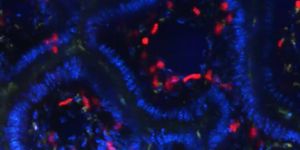Medication to dissolve blood clots and various surgical procedures can be done to reverse damage done to arteries with obstructive blood clots, a condition called arterial thrombosis. However, scientists have discovered a more natural way to resolve this condition to prevent increased risk of heart attack and stroke, and without resorting to invasive surgery.

MicroRNAs (miRNAs) are tiny molecules that play a big role in gene expression regulation. At only 22 nucleotides long, these single-stranded molecules are some of the shortest of known genetic material, and scientists in a new study published in
The FASEB Journal believe their gene expression regulation capabilities could extend to proteins and genes involved in the development of arterial thrombosis.
In their study, scientists from Brigham and Women’s Hospital drew upon previous knowledge that a specific type of microRNA called miR-181b regularly balances the impact of both acute and vascular inflammation. Arterial thrombosis often results from arterial damage due to atherosclerosis, a condition that consists of plaque deposits in the blood vessels that can be exacerbated by inflammation. When these atherosclerotic plaques rupture, obstructive blood clots can form.
They saw that miR-181b targets a protein called Card10, which is involved in activating inflammation through apoptosis signaling and other highly specific interactions with other proteins. If inflammation isn’t under the right control, blood clots can form continuously, causing a “vicious cycle” of arterial thrombosis.
Building on this observation, researchers conducted preclinical studies of mouse models of thrombosis in the carotid artery. When they delivered a supply of miR-181b to these mice, they saw a 73 percent reduction in blood clot formation as well as a significant increase in the time the arteries took to become blocked. Similarly, when they went right to the suspected source of the blood clot formation, Card10, and directly blocked its activity, they saw the same trends in reduction.
Corresponding author Mark Feinberg explained the study’s significance:
“Delivery of miR-181b or Card10 inhibition may constitute a new therapeutic approach to reduce arterial thrombosis.”
This study has significant implications for conditions closely related to arterial thrombosis: heart attack, stroke, and peripheral artery disease.
Sources:
Brigham and Women’s Hospital,
Exiqon,
National Health Service,
Gene Cards Human Gene Database










